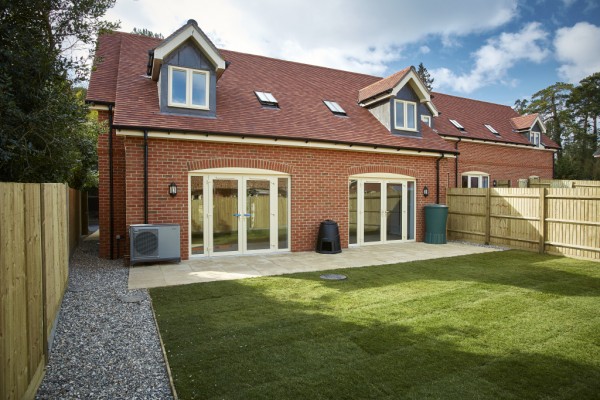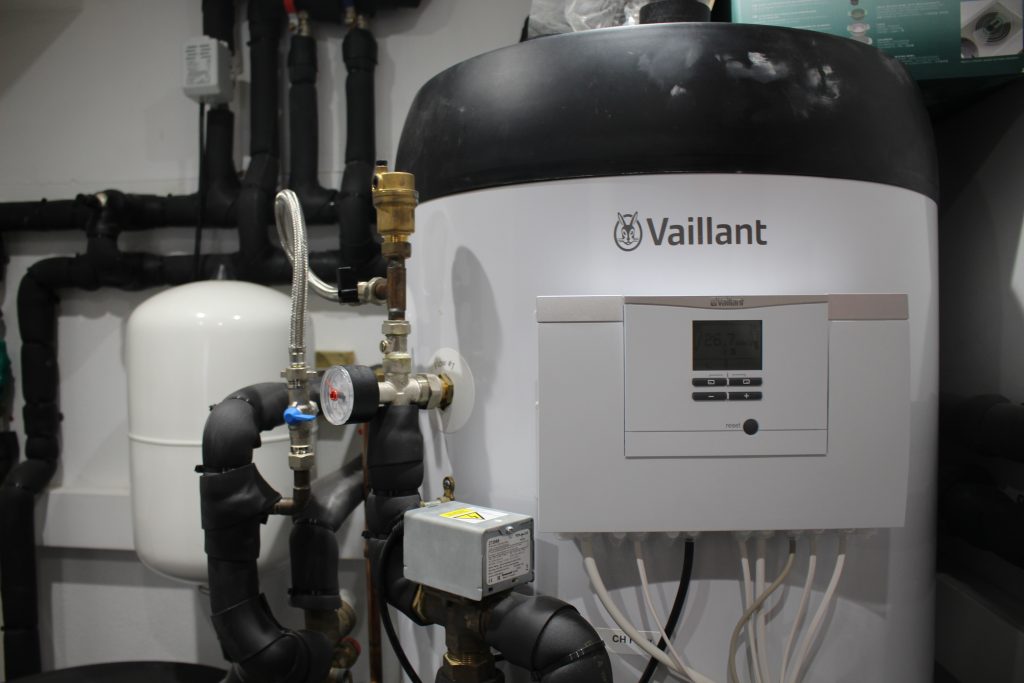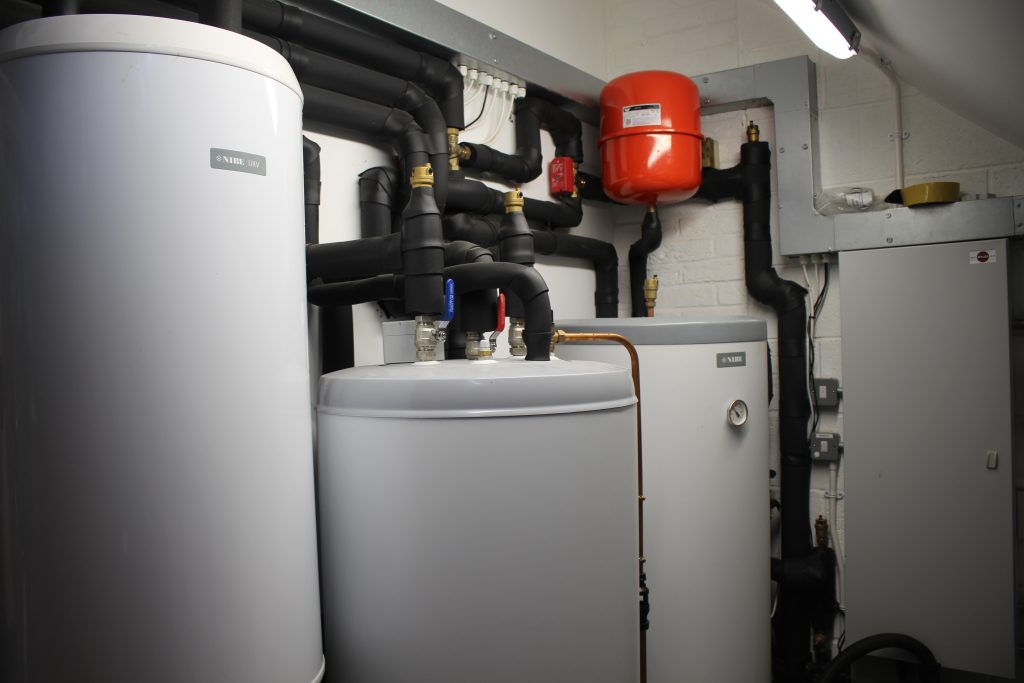What kit do you need for an air source heat pump system?
Air Source Heat Pumps collects thermal energy from the air outside. The heat pump is located externally, either next to an outside wall, or connected to the property with pre-insulated pipes buried in a trench. Internally, the system usually consists of a hot water cylinder, a buffer tank, and two expansion vessels.

Government support
Most air source heat pump installations can be eligible for a £7,500 voucher from the Boiler Upgrade scheme.
Better Planet applies for the voucher on behalf of our clients. Once the installation is completed and all eligibility criteria are met, we redeem the voucher and reduce the price of the installation with the same amount as the voucher.

Planning Requirements
Air source heat pumps are subject to Permitted Development rules. It can be a permitted development unless:
- You have a listed building, are in a conservation area, or an area of outstanding natural beauty.
- A neighbor noise impact assessment shows that the heat pump location is too close to a neighbor’s window.
- The is more than one heat pump in the system.
- The heat pump is set up to do cooling.
Noise
All heat pumps emit noise. The heat pumps we specify have decibel ratings (sound power EN 12102) in the range of 48-62 dB. Most people don’t consider them noisy, but sensitivity to noise is individual.
If you are worried about noise, we can arrange for you to visit one of our installations and listen to one.

Running cost savings
Even if air source heat pumps extract energy from outside air, they also require electricity to run a compressor and circulation pumps. If you currently have electric storage heaters and use LPG or oil, you can save a lot.
If you are on mains gas, the electricity cost to run the heat pump can be similar to the cost of gas. If you have a well-insulated property and underfloor heating our high-capacity radiators, the heat pump running cost will be lower. In our quotations, we have a bespoke estimate for the running cost of your property.












